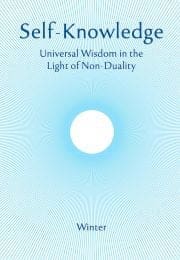The Nature of Truth
Why ask: ‘What is Truth?’ The question springs from one of the most fundamental urges in the human mind. This instinct to learn the truth or reality of things, is the spur driving scientists to make their discoveries. It is present in every human heart, and if this urge is stifled, we are reduced to the position of a machine or lower animal. Only we ask the question: ‘What is Truth?’ and when this question is no longer raised, we cease to be human.
The reality of an object is not in the attributes revealed to our senses. A single object gives different sense impressions in proportion as our sensory faculties are developed. To a one-celled amoeba an extremely limited impression is given; a child apprehends much more, but less than a mature person; while one who has learnt to develop intuitive wisdom, has much fuller and clearer impressions than the normal person.
In what then does the ‘reality’ of the object exist which gives such diverse impressions? It cannot exist in the impressions, so we must connect it with the ‘unchanging nature’ of the object by which alone we can identify it as the ‘same’ object appearing in different guises to different persons. The first thing we can say about the reality of an object is that its nature is the same or ‘unchanging’.
As a working definition, (for in the absolute sense it is indefinable) we may say that reality, or Truth, is ‘that which does not contradict itself’. Appearances are contradicted by subsequent knowledge, and so they cannot be absolute Truth. It is misty and we think we see the stump of a tree on the hillside. Coming nearer we find it is a man and, nearer still, that it is a well-known acquaintance. Appearances, because contradicted by subsequent knowledge, cannot be called absolute Truth.
Falsehood would be meaningless if there were no truth. Consider the self-contradiction in the proposition: ‘There is no such thing as truth’, which condemns itself as false and hence asserts the existence of truth! Nor can we escape the fact that the recognition that worldly objects are transient points to a permanent reality (the only standard by which their instability can be gauged). This continual flux of the phenomenal objects must stand on an unchanging substratum.
The Upanishads teach an Absolute Reality and a relative one. Absolute Reality is that which can never be denied, which transcends time, space, causation, or any of their modifications or effects. Relative reality is the reality as between objects, between mind and phenomena and so forth. ‘Mithya’ is the word used in the dictum ‘God is real and the world “unreal”’. ‘Unaccountable’ would be a more accurate translation than ‘unreal’. The non-dual philosophy does not consider the world to be unreal in the sense of non-existent, like a creature of the imagination. If it were so, no impressions of it would be possible such as are experienced by us. But the philosophy holds that it has no independent existence, resting as it does on the substratum of Absolute Truth, Reality or God, all terms attempting to describe the one indescribable Being. Can there be more than one Truth? The Upanishads speak of the Absolute Brahman as One without a Second, because one, two and three are only concepts of our world of time, space and causation, which Truth infinitely transcends. Truth or God must be One without a Second and it is on the substratum of Truth that the whole world exists.
A corollary of the above is that if you know God or Truth, there is nothing else to be known: in other words, you will be omniscient. Do not try to ask: ‘What is God?’ or ‘Where is God?’ for you are thereby reducing Him to an object of a certain size and with certain qualities. Realize that the enquiring voice within you asking ‘What is God?’ is God Himself, and turn your mind inwards to learn the true nature of your own Self, which is God or Truth.
H.P.S.


